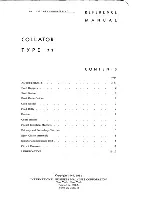
MATERIAL SAFETY DATA SHEET
Page 2 of CP-341
Information on this data sheet represents our current data and best opinion as to the proper use in handling of this product under normal conditions.
On the basis of the data available to us, this product is not a dangerous substance. One should, however, observe the usual precautionary measures
for dealing with chemicals.
Section 6: Accidental Release Measures
Spill / leak Procedures: If spilled, sweep up using an approved toner vacuum with a 0.5 micron filter or smaller, such as the Atrix AAA Toner
Vacuum or 3M Toner Vacuum. Use of a vacuum cleaner not rated for toner particles, could result in a fire or personal injury. Remove residue
with soap and cold water.
Miscellaneous: Keep product out of sewers and watercourses.
Personal protection: Avoid inhalation of dust.
Section 7: Handling and Storage
Special Handling:
Cleanse skin after contact before breaks or meals, and end of workday.
Special Storage:
Avoid direct sunlight. Keep out of reach of children. Store in a cool, dry place.
Section 8: Exposure Control and Personal Protection Information:
Respiratory Protection: none required under normal use. Hand Protection: none required under normal use.
Eye Protection: none required under normal use. Skin Protection: none required under normal use.
Section 9: Physical and Chemical Properties
CHARACTERISTICS:
Appearance:
Black
Melting point:
110
°
C - 150
°
C
Form:
Powder
Vapor pressure:
n/a
Odor:
Odorless
Vapor density:
n/a
Solubility in Water:
Negligible
Evaporation rate:
n/a
Specific gravity:
1.1 – 1.5
Boiling point:
n/a
Section 10: Stability and Reactivity
Conditions to avoid: none Materials to avoid: none Stability: Stable
Hazardous decomposition products: CO and CO2 and other decomposition products when burned.
Section 11: Toxicological Information:
Health Hazards (Acute, Chronic, Immediate and Potential):
Minimum irritation to respiratory tract may occur as with exposure to any non-
toxic dust. May cause gasping if inhaled. Inhalation should be avoided. May cause temporary eye discomfort.
Health Hazards of Long Term exposure (Chronic):
A manufacturer sponsored chronic inhalation study in rats using a special test toner
revealed there were no lung changes at all in the lowest exposure level (1mg/m
3
), the most relevant level to potential human exposures. A very
slight degree of fibrosis was noted in 25% of the animals at the middle exposure level (4mg/m
3
), while a slight degree of fibrosis was observed
at the highest exposure level (16mg/m
3
) in all animals. These findings are attributed to “Lung Overloading”, a generic response to excessive
amount of any dust retained in the lungs for a prolonged interval. The special test toner was ten times more respirable than commercially
available toner to comply with EPA testing protocol and would not function properly in Xerographic equipment.
Carbon Black is listed on the IARC Monograph and the Massachusetts Substance List. The IARC has evaluated the evidence for the
carcinogenicity of Carbon Black as inadequate to determine a carcinogenic risk for humans.
This product contains no known hazardous materials as defined by the OSHA Hazard Communication Standard 29 CFR 1910.1200.
Section 12: Environmental / Ecological Information
None
Section 13: Disposal Consideration
Used Toner should be disposed of under conditions that meet all federal, state and local environmental regulations. Disposal regulations vary
from locality to locality, therefore consult your local Lanier office or the EPA to determine the proper method for disposal. Do not incinerate loose
or spilled Toner.
Section 14: Transportation Information
None. This is not a hazardous product.





















